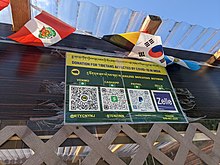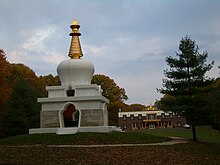
The Gelug is the newest of the four major schools of Tibetan Buddhism. It was founded by Je Tsongkhapa (1357–1419), a Tibetan philosopher, tantric yogi and lama and further expanded and developed by his disciples.
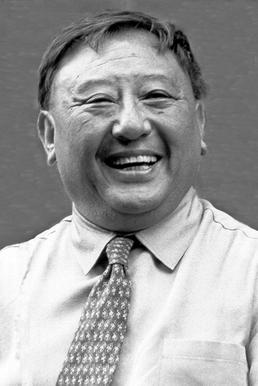
Kyabje Nawang Gehlek Rimpoche was a Tibetan Buddhist lama born in Lhasa, Tibet on October 26, 1939. His personal name was Gelek; kyabje and rimpoche are titles meaning "teacher" and "precious," respectively; he is known to Tibetans as Nyakre Khentrul Rinpoche. According to Thupten Jinpa, principal English translator to the Dalai Lama, he is considered
"an important link to the great lineages of Tibet’s great masters, especially of the Geluk school. Known more famously for the Tibetans as Nyakre Khentrul Rinpoche, Rinpoche had been instrumental in reprinting many of the Geluk texts in the 1970s, and also remained an important object of affection for both Kyabje Ling Rinpoche and Kyabje Trijang Rinpoche. Of course, his emergence as one of the great Tibetan teachers in the West has also been a source of inspiration for many.”

Losar also known as Tibetan New Year, is a festival in Tibetan Buddhism. The holiday is celebrated on various dates depending on location tradition. The holiday is a new year's festival, celebrated on the first day of the lunisolar Tibetan calendar, which corresponds to a date in February or March in the Gregorian calendar. In 2024, the new year commenced on 10 February and celebrations ran until the 12th of the same month. It also commenced the Year of the Male Wood Dragon.
The Dorje Shugden controversy is a controversy over Dorje Shugden, also known as Dolgyal, whom some consider to be one of several protectors of the Gelug school, the school of Tibetan Buddhism to which the Dalai Lamas belong. Dorje Shugden has become the symbolic focal point of a conflict over the "purity" of the Gelug school and the inclusion of non-Gelug teachings, especially Nyingma ones.

Trul khor, in full tsa lung trul khor, also known as yantra yoga, is a Vajrayana discipline which includes pranayama and body postures (asanas). From the perspective of the Indo-Tibetan Buddhist traditions of Dzogchen, the mind is merely vāyu in the body. Thus working with vāyu and the body is paramount, while meditation, on the other hand, is considered contrived and conceptual.

Pabongkhapa Déchen Nyingpo was a Gelug lama of the modern era of Tibetan Buddhism. He attained his Geshe degree at Sera Mey Monastic University, Lhasa, and became a teacher in Tibet. He teaches lay-people. Pabongkha was offered the regency of the present Dalai Lama but declined the request because "he strongly disliked political affairs."
Ngawang Wangyal, aka Sogpo (Mongolian) Wangyal, popularly known as Geshe Wangyal and "America's first lama," was a Buddhist lama and scholar of Kalmyk origin. He was born in the Astrakhan province in southeast Russia sometime in 1901 and died in West Palm Beach, Florida in 1983. He came to the United States from Tibet in 1955 and was the spiritual leader of the Kalmuk Buddhist community in Freewood Acres, New Jersey at the Rashi Gempil-Ling Buddhist Temple. He is considered a "founding figure" of Buddhism in the West.
Shabdrung Lama Kunga Thartse Rinpoche is a Tibetan teacher of the Sakya school of Vajrayana Tibetan Buddhism. Lama Kunga Rinpoche is licensed in California to perform marriages with a Tibetan Buddhist ceremony.

Glenn H. Mullin is a Tibetologist, Buddhist writer, translator of classical Tibetan literature and teacher of Tantric Buddhist meditation.
Kyabje Trijang Chocktrul Rinpoche is the current tulku of the third Trijang Rinpoche, and succeeded Trijang Lobsang Yeshe Tenzin Gyatso. Rinpoche is the current principal throne holder of Shar Gaden Monastic University in South India, Karnataka, and the spiritual director of the Trijang Buddhist Institute in Northfield, Vermont.

Zong Rinpoche was a Gelug Lama and disciple of the third Trijang Rinpoche, junior tutor of the 14th Dalai Lama. He was famous as a sharp analyst and master of philosophical debate, as well as a Tantric practitioner. He was the Abbot of Ganden Shartse monastery.
Khensur Denma Locho Rinpoche also known as Lobsang Oser Choying Gyatso, was a Tibetan incarnate lama, or tulku, of the Loseling College of Drepung Monastery. An expert on Yamantaka and Vajrayogini, he is considered an incomparable luminary of Je Tsongkhapa's lineage, is renowned as a holder of the Tantric lineages, a master of the Tantric yogas, and the lineage holder of Ling Rinpoche.

The Tibet Institute Rikon is a Tibetan monastery located in Zell-Rikon im Tösstal in the Töss Valley in Switzerland. It was established as a non-profit foundation in 1968, because Swiss laws resulting from the 19th century secularization movement did not allow for the establishment of new monasteries until 1973.

Lodi Gyaltsen Gyari Rinpoche, Kasur Lodi Gyari or "as he is universally known to the Tibetan-speaking world, Gyari Rinpoche" was a Tibetan politician, and journalist who served as the 14th Dalai Lama's special envoy to the United States. Exiled to India in 1959, he was also the executive chairman of the International Campaign for Tibet.

Kyabje Yongzin Ling Rinpoche is a Tibetan tulku. The best-known incarnation is the sixth incarnation, Thupten Lungtok Namgyal Thinley, a Tibetan buddhist scholar and teacher.
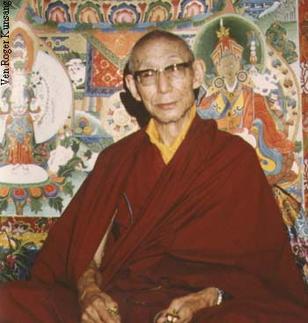
The Third Trijang Rinpoche, Lobsang Yeshe Tenzin Gyatso (1901–1981) was a Gelugpa Lama and a direct disciple of Pabongkhapa Déchen Nyingpo. He succeeded Ling Rinpoche as the junior tutor of the 14th Dalai Lama when the Dalai Lama was nineteen years old. He was also a lama of many Gelug lamas who taught in the West including Zong Rinpoche, Geshe Rabten, Lama Yeshe, Kelsang Gyatso, and Lama Zopa Rinpoche. Trijang Rinpoche's oral teachings were recorded by Zimey Rinpoche in a book called the Yellow Book.

The Tibet Center, also known as Kunkhyab Thardo Ling, is a dharma center for the study of Tibetan Buddhism. Founded by Venerable Khyongla Rato Rinpoche in 1975, it is one of the oldest Tibetan Buddhist centers in New York City. The current director is Khen Rinpoche Nicholas Vreeland, the abbot of Rato Dratsang monastery. Philip Glass assisted with the founding of The Tibet Center. Since 1991 TTC has invited and hosted the 14th Dalai Lama for teaching events in New York in partnership with the Gere Foundation.
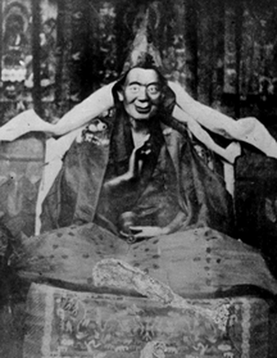
Domo Geshe Rinpoche is said to have been Shariputra, the Mahadsiddha Gayadhara, Dharmashri, Munijnana, Tönmi Sambhota, King Trisong Detsen, Dromtönpa, Milarepa, Khedrup Rinpoche, and Dragpa Gyaltsen in previous lives.
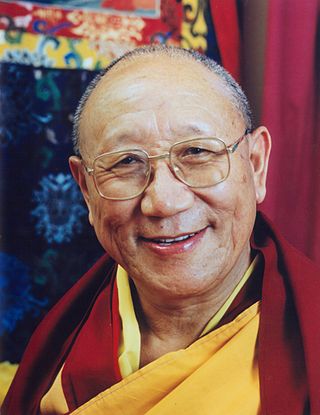
Kyabje Khensur Kangurwa Lobsang Thubten Rinpoche, was a Buddhist monk, Abbot of Sera Jey Monastery, and the founder of Tibetan Buddhist Institute (Adelaide). Khensur means "former abbot" and Rinpoche means "precious teacher."
Tibetan Review is a Tibetan monthly journal and news website published in English, based in Delhi, India. It was first published in Darjeeling, West Bengal in April 1967 by Lodi Gyari. It is well known for its open and vibrant democratic forum for the discussion of the Tibetan problem and other related governmental and social issues on Tibet.
